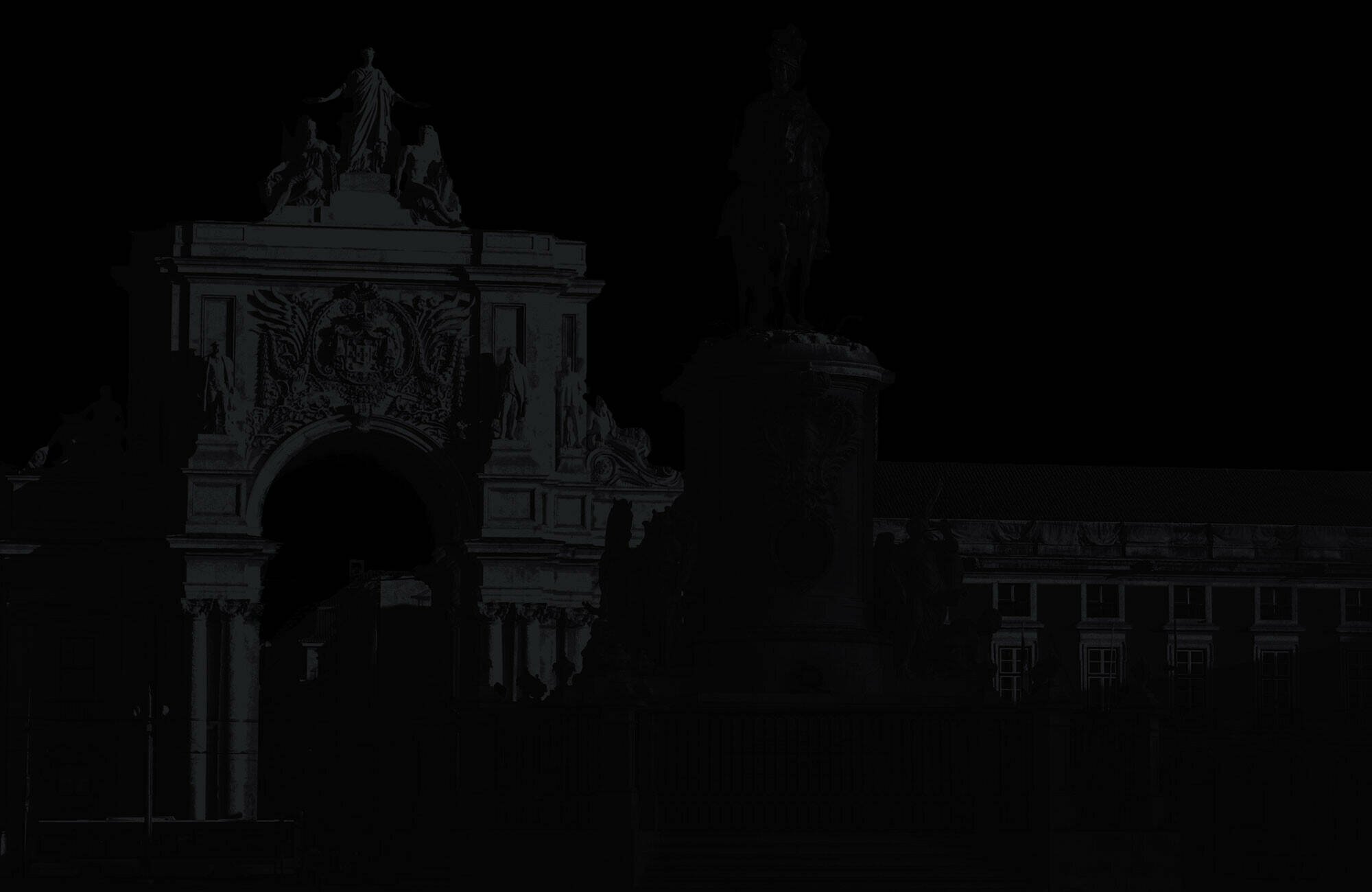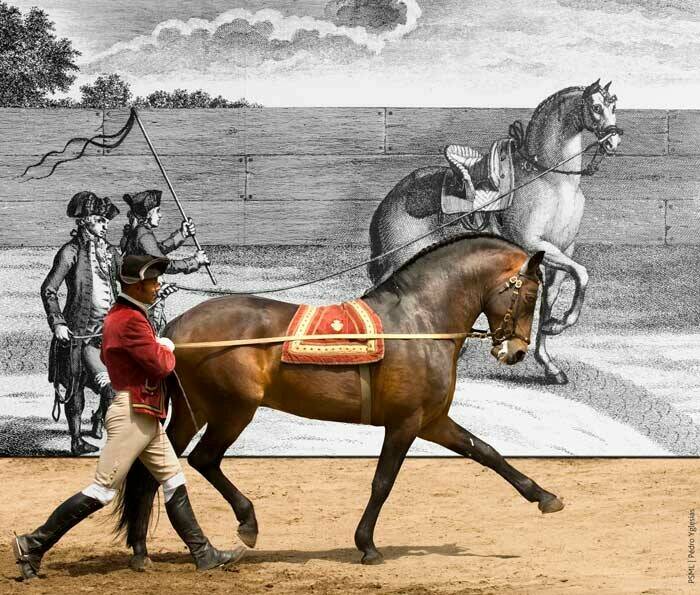
António Borba Monteiro was brought up in a family of breeders of both bulls and horses. His uncle was the one who originally introduced Antonio to the ancient Portuguese traditions surrounding the Lusitano horses. On his 18th birthday Antónia moved in with his uncle and aunt to train with some of the best riders in the classical equine art. Today he lives at the same place with his own family and continues his uncle’s work.
As a young rider Antonio was lucky enough to get to work with one of the most famous trainers and riders, Master Nuno de Oliveira, who has inspired several riders and horse owners worldwide to appreciate the classical methods. Working with Master Nuno de Oliveira was and is viewed a great honor.
Text by Desirée Larsen // Edited by Laura Sofie Krebs // Sources: Visitportugal.com, Lusitanohorsefinder.com // Photos: Rita Fernandes, Pedro Yglesias de Oliveira, Malgré Tout Media
The proud traditions of educating horses after classical methods are only maintained in a few places in the world. One place is the Portuguese School of Equestrian Art. Here they still do levades and caprioles almost as it was done back in the 17th Century. We have met with António Borba Monteiro who educates both riders and horses in classical dressage. Join us for a look back into the history books, and forward into the future of modern dressage.

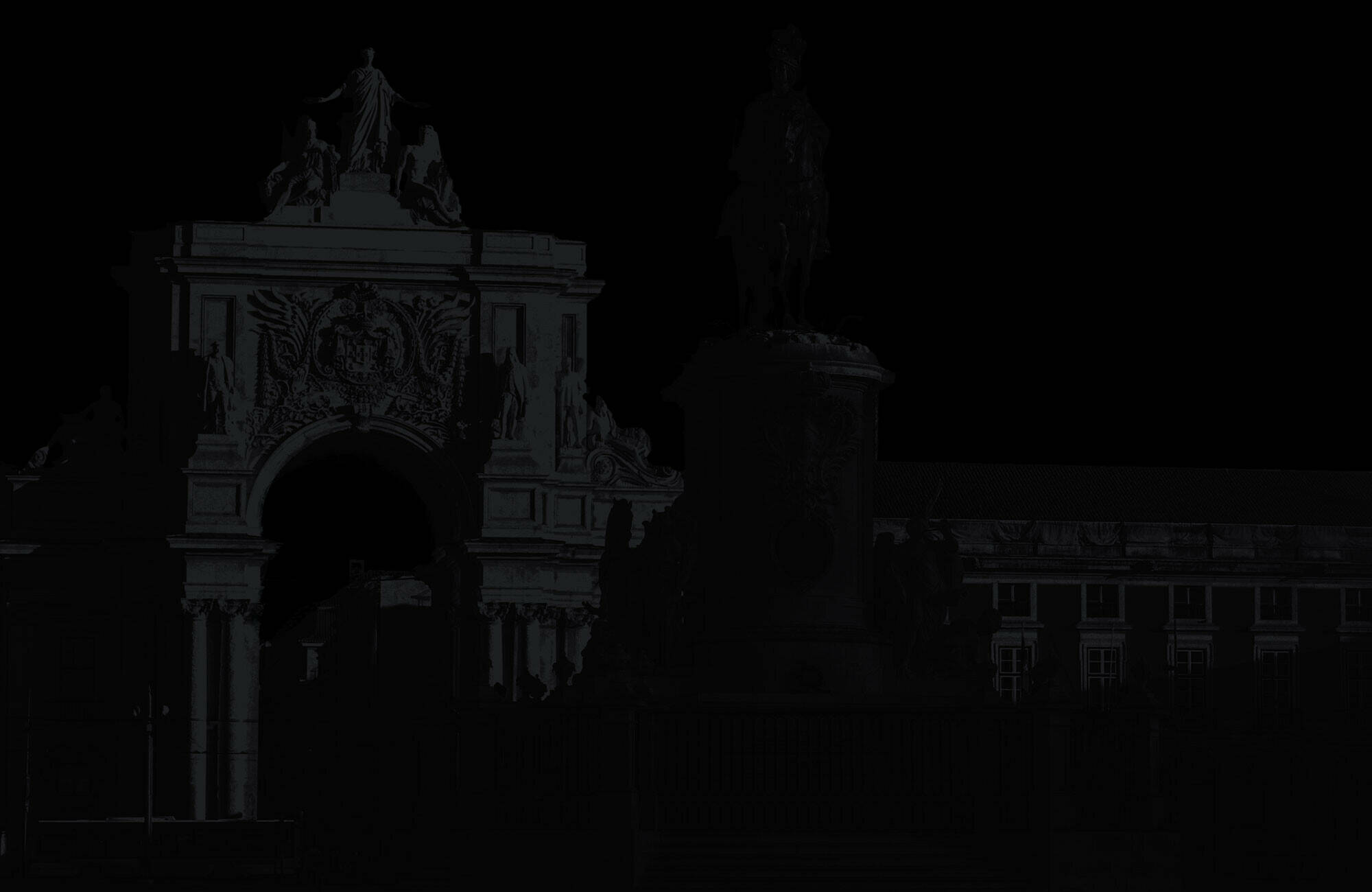
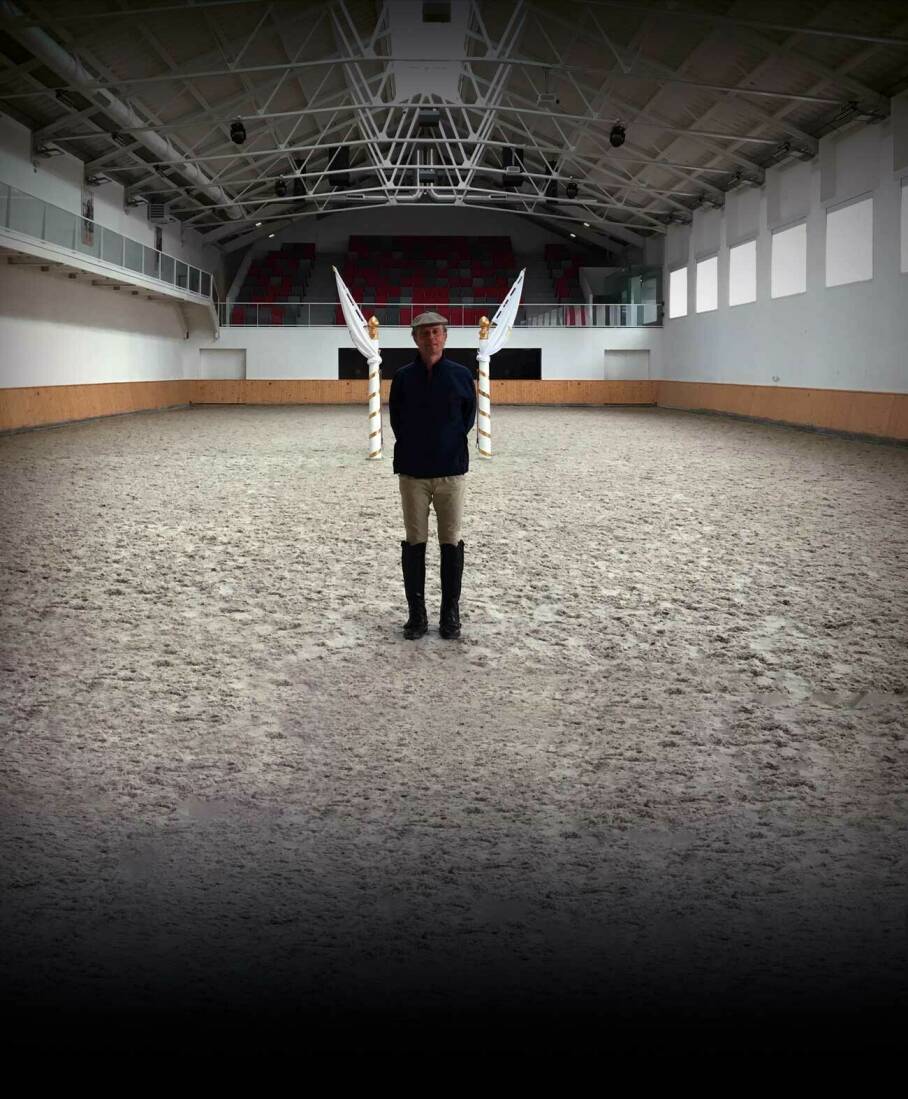
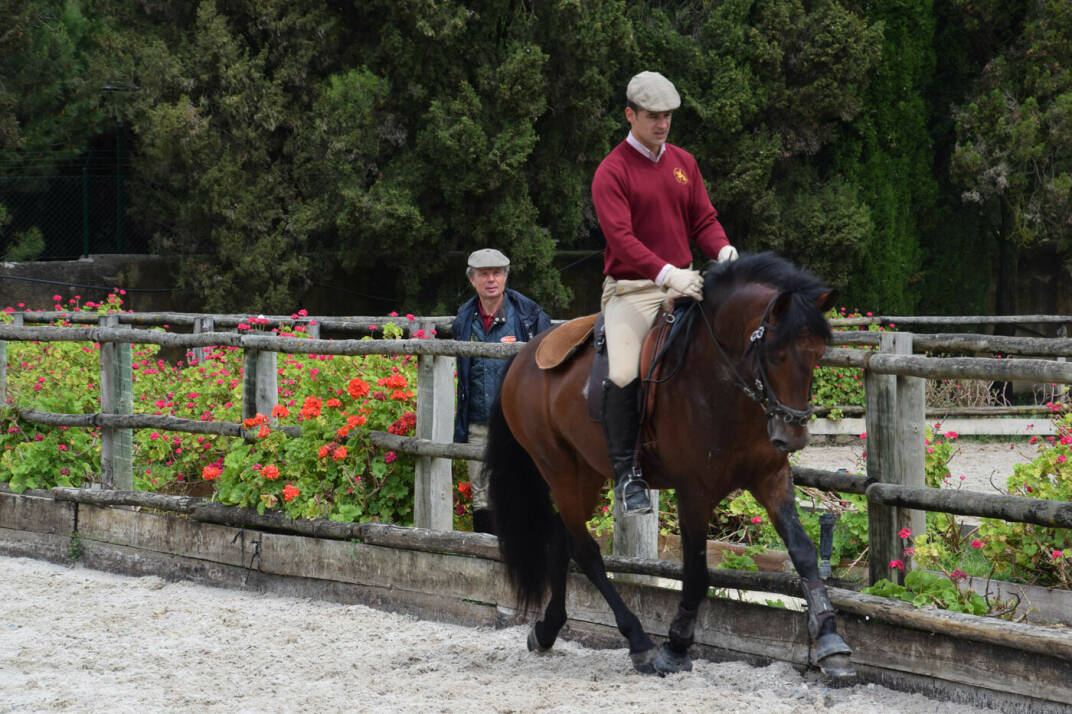

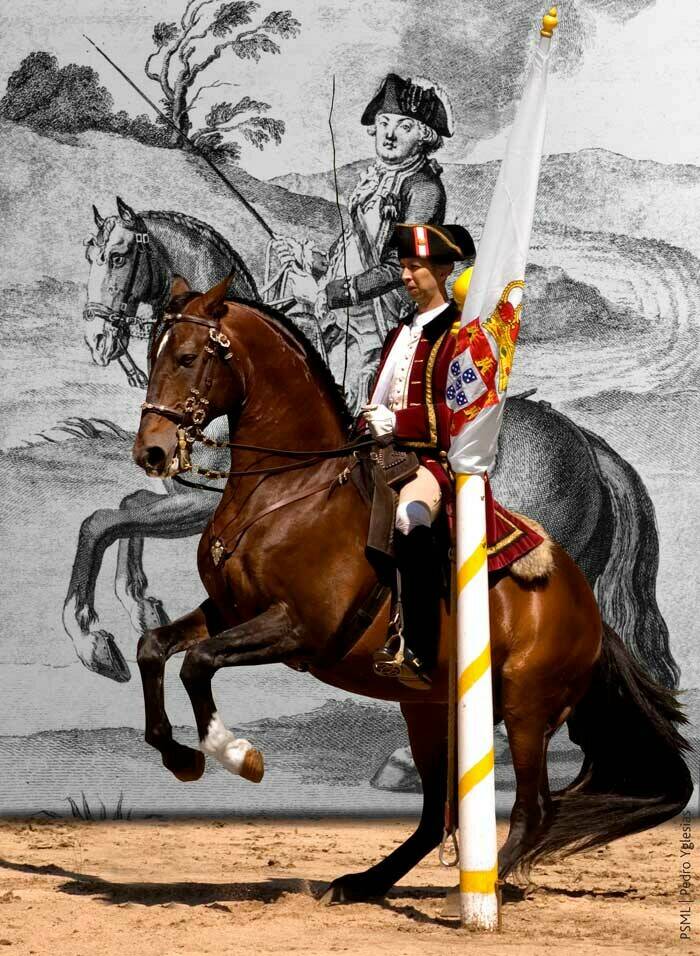


- The Spanish School of Equestrian Arts, Vienna Austria
- The Portuguese School of Equestrian Art, Lisbon Portugal
- The Royal Andalusian School of Equestrian Art, Spain
- Cadre Noir in Saumur, France
When we understand to appreciate the horse’s dynamics, know its mind and is able to control the energy – then we can fly
Still living the dream
Over time António participated in both educating the young horses and competing at the highest international level in dressage. Today he doesn’t compete anymore.
“When you are participating in competitions you often ride a specific program that everybody must be able to perform whether your horse has a talent for it or not,” he explains.
“You ride with an idea of what the horse should be able to do and then try to incorporate its skills. To do something so specific is very stressful for both the rider and horse.”
In 1998 António himself received the extraordinary title of master or chief at the school. Today there are two employees with this title, and together these two oversee the education of both riders and horses. António is not certain how he ended up on this path, but he knows why he is still devoting so much time to it.
“The horses give me a feeling of balance and enthusiasm for life and riding. People around me don’t necessarily understand why I spend so much time with the horses. For me it is still a dream. I love horses, and they always tell the truth right away. Horses are easy to train: When we do the right thing, we get the correct feedback right away.”
Understanding your horse
The school trains and educates 30 young horses and 40 show horses every day, and this is done according to the old methods. António highlights three things he believes characterizes classical dressage:
1.The starting point is to understand the horse the best way possible.
2.Adapt the classical methods to each horse.
3.When we ride the horses, we must adapt our body to the horse’s physics so that the horse doesn’t end up in pain.
Antonia recalls the stallion Rico who won many international victories with famous Finish dressage rider Kyra Kyrklund. Kyras’ riding of Rico prompted an evolvement of the training at the school, which António explains like this:
“The rider should always seek to adjust to the horse. This is what makes it classical. Every day we are watching over the horses making sure they are doing well. Always being relaxed, deep breaths and paying attention to yourself. We must know our self well to ride well. When we understand to appreciate the horse’s dynamics, know its mind and is able to control the energy – then we can fly.”
In António’s opinion all horses should be trained individually. To begin with, he did not work with this in mind. But now he has become much more aware of the importance, because as he emphasizes:
“Horses are able to feel if we are happy or just want to see results.”
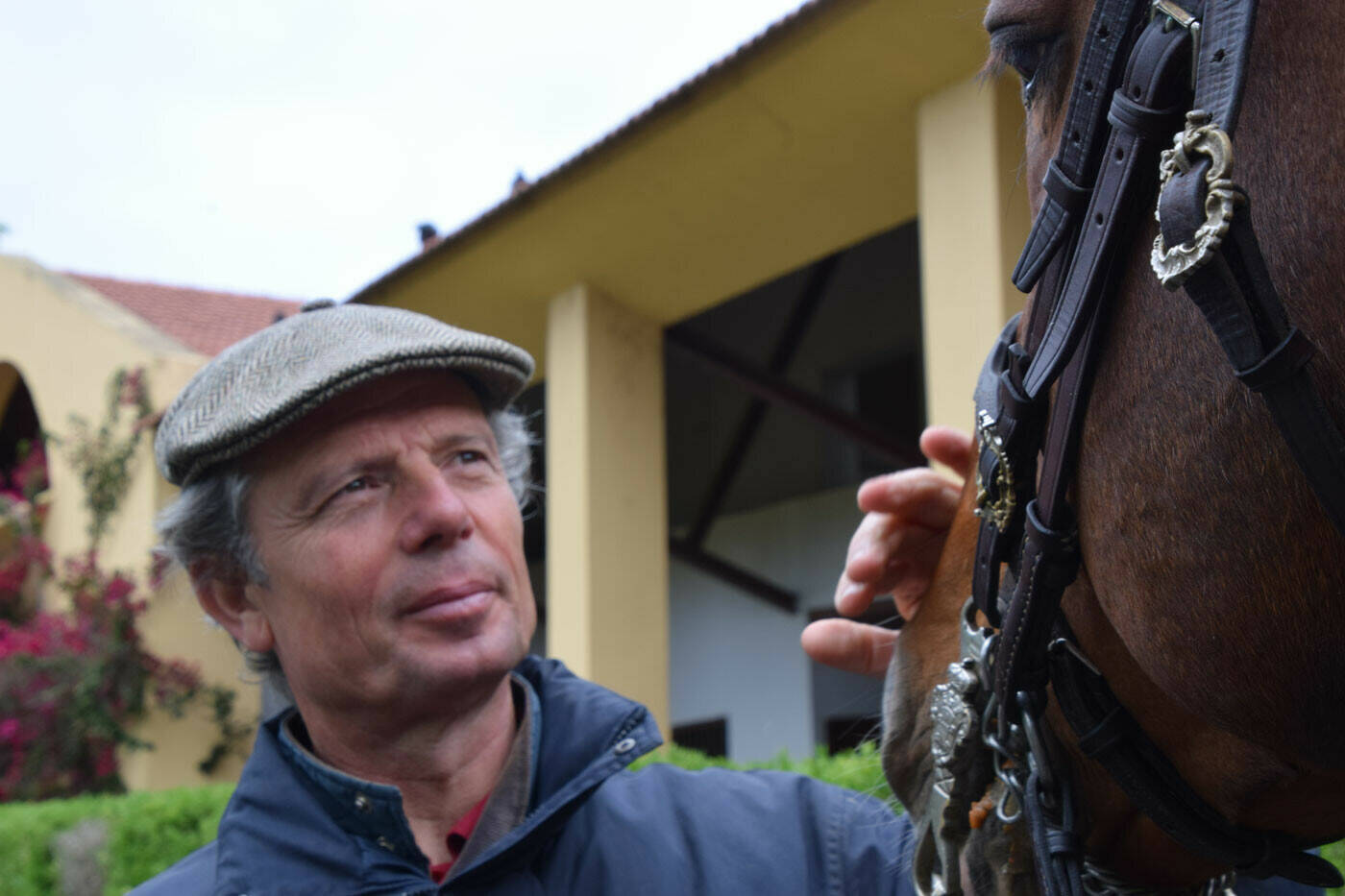
- Daily training sessions in the morning are open to the public and showcase the daily work done by the riders at the EPAE. How they train and prepare horses of different ages for the school’s performances. In these training sessions, the riders wear normal working clothes. These sessions are open to individuals and groups of visitors, including school parties.
- Weekly presentations consist of ballet-style performances to music and features presentations of classical dressage exercises and choreographies by EPAE riders and horses. The riders wear gala costumes and use traditional Portuguese saddles and harnesses. Each presentation lasts approximately 45 minutes.
- For the regular shows held at Picadeiro Henrique Calado in Belém, Lisbon, the stallions are dressed up in replicas of the 18th century saddlery, braided and adorned with red and golden silk bands. The weekly shows display a carousel, a Pas de Deux, and work in hand with the dramatic airs above the ground. Once a month there is an evening gala performance, here the spectators enjoy an extended show that also include the Mounted Court games, re-created after descriptions in Luz da Liberal. In this piece the riders are dressed in colorful 18th century costumes and perform exercises like hitting a dummy with a lance, pick up a bouquet with a sword, spear a small ring and hit a target with an arrow.
In fact, the Royal court, in desperation to preserve it moved everything including the stud horses to safety in Brazil. However, it’s still important to remember that like the other schools EPAE has an equally long and fine tradition of equestrian art, and since being re-establishing in 1979 the school has been dedicated to preserving Portugal’s fabulous heritage in equestrian tradition.
The present-day school is a recreation of the 18th century Portuguese equestrian academy of the royal court, Real Picaria. The original maroon velvet costumes, the tricorn hats and tack used has undergone very few changed and the horses ridden today are from the same stud farm as previously.
The school’s riders follow the principles laid out in the book, Luz da Liberal e Nobre Arte da Cavallaria (1790). An extensive work that illustrates everything from basic grooming to teaching the airs above the ground and the mounted court games.
Portuguese equestrian heritage
When talking about riding history Portugal is often overseen, which is not entirely fair as the Portuguese or Iberian riders back in ancient days were world famous for their agile, brave horses and their superb skills in training horses for mounted warfare. Later during the renaissance these skills evolved into the art of classical dressage making it a very long and fine tradition that the Portuguese School of Equestrian Art today aims to preserve. They are doing a very fine job, and if you ever pass by Lisbon, make sure to pay them a visit.
Each horse has a talent
António thrives with challenges, and believes he is evolving every day. He is determined that horses understand him and is always looking for the best method for each horse. António remembers a 6-year-old horse given up be everyone, because it wasn’t trained with its own physic in mind.
“The stallion didn’t have a functional balance, it had a short body, short legs and a big neck and head. Today this horse is the champion of the show when it comes to capriole.”
Lusitano horses start their training at the Portuguese School of Equestrian Arts during spring of the year they turn 3. The training of the young horses begins slowly from the ground. Before the horse are even put in a lunge line, it needs to able to walk next their rider and pay attention to the person walking with it.
“A successful exercise is when the horse is performing the exercise completely relaxed,” Antonio explains.
“When the horse can walk next to his rider calmly and focused then we can move on to the lunge work in a closed arena. Some horses find it more difficult to concentrate than others, and in this case, it’s important that the rider stays calm and balanced so he can project this to the horse. Classical riding means that you always ride from the horse and look for its best qualities – everyone has a talent for something. We just have to find out what fits the individual horse.”
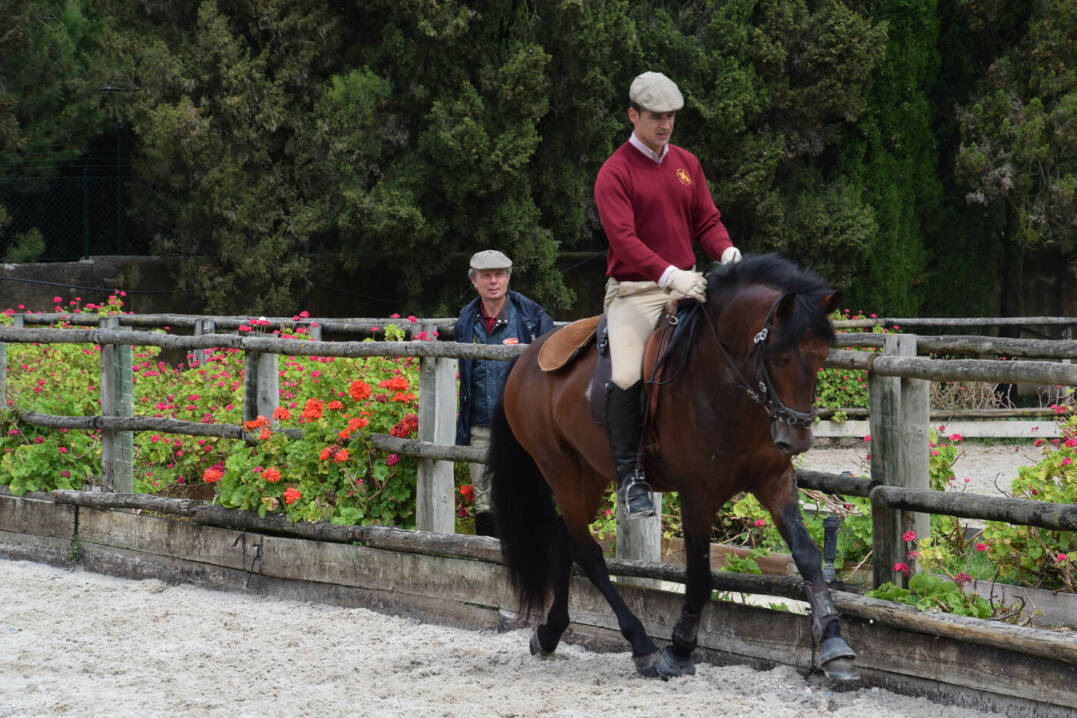

When we understand to appreciate the horse’s dynamics, know its mind and is able to control the energy – then we can fly
Still living the dream
Over time António participated in both educating the young horses and competing at the highest international level in dressage. Today he doesn’t compete anymore.
“When you are participating in competitions you often ride a specific program that everybody must be able to perform whether your horse has a talent for it or not,” he explains.
“You ride with an idea of what the horse should be able to do and then try to incorporate its skills. To do something so specific is very stressful for both the rider and horse.”
In 1998 António himself received the extraordinary title of master or chief at the school. Today there are two employees with this title, and together these two oversee the education of both riders and horses. António is not certain how he ended up on this path, but he knows why he is still devoting so much time to it.
“The horses give me a feeling of balance and enthusiasm for life and riding. People around me don’t necessarily understand why I spend so much time with the horses. For me it is still a dream. I love horses, and they always tell the truth right away. Horses are easy to train: When we do the right thing, we get the correct feedback right away.”
António Borba Monteiro was brought up in a family of breeders of both bulls and horses. His uncle was the one who originally introduced Antonio to the ancient Portuguese traditions surrounding the Lusitano horses. On his 18th birthday Antónia moved in with his uncle and aunt to train with some of the best riders in the classical equine art. Today he lives at the same place with his own family and continues his uncle’s work.
As a young rider Antonio was lucky enough to get to work with one of the most famous trainers and riders, Master Nuno de Oliveira, who has inspired several riders and horse owners worldwide to appreciate the classical methods. Working with Master Nuno de Oliveira was and is viewed a great honor.
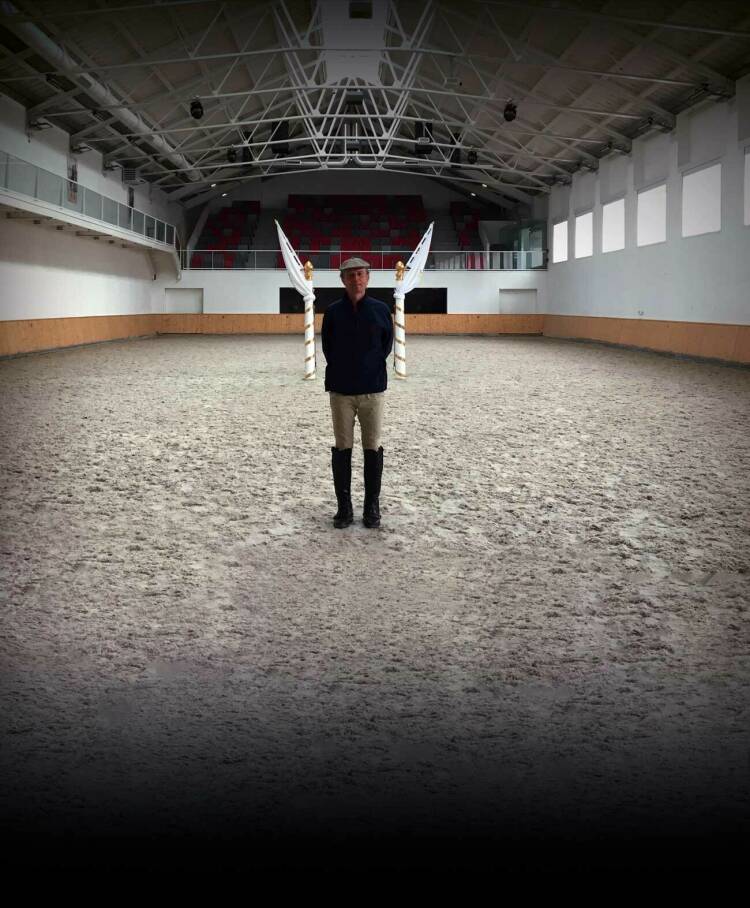
Understanding your horse
The school trains and educates 30 young horses and 40 show horses every day, and this is done according to the old methods. António highlights three things he believes characterizes classical dressage:
1.The starting point is to understand the horse the best way possible.
2.Adapt the classical methods to each horse.
3.When we ride the horses, we must adapt our body to the horse’s physics so that the horse doesn’t end up in pain.
Antonia recalls the stallion Rico who won many international victories with famous Finish dressage rider Kyra Kyrklund. Kyras’ riding of Rico prompted an evolvement of the training at the school, which António explains like this:
“The rider should always seek to adjust to the horse. This is what makes it classical. Every day we are watching over the horses making sure they are doing well. Always being relaxed, deep breaths and paying attention to yourself. We must know our self well to ride well. When we understand to appreciate the horse’s dynamics, know its mind and is able to control the energy – then we can fly.”
In António’s opinion all horses should be trained individually. To begin with, he did not work with this in mind. But now he has become much more aware of the importance, because as he emphasizes:
“Horses are able to feel if we are happy or just want to see results.”
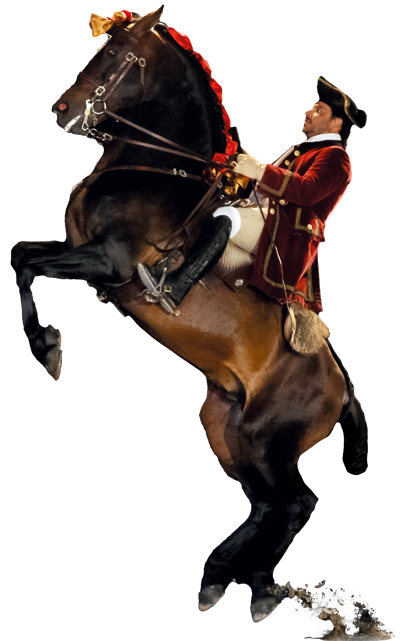

The proud traditions of educating horses after classical methods are only maintained in a few places in the world. One place is the Portuguese School of Equestrian Art. Here they still do levades and caprioles almost as it was done back in the 17th Century. We have met with António Borba Monteiro who educates both riders and horses in classical dressage. Join us for a look back into the history books, and forward into the future of modern dressage.
Text by Desirée Larsen // Edited by Laura Sofie Krebs // Sources: Visitportugal.com, Lusitanohorsefinder.com // Photos: Rita Fernandes, Pedro Yglesias de Oliveira, Malgré Tout Media
- Daily training sessions in the morning are open to the public and showcase the daily work done by the riders at the EPAE. How they train and prepare horses of different ages for the school’s performances. In these training sessions, the riders wear normal working clothes. These sessions are open to individuals and groups of visitors, including school parties.
- Weekly presentations consist of ballet-style performances to music and features presentations of classical dressage exercises and choreographies by EPAE riders and horses. The riders wear gala costumes and use traditional Portuguese saddles and harnesses. Each presentation lasts approximately 45 minutes.
- For the regular shows held at Picadeiro Henrique Calado in Belém, Lisbon, the stallions are dressed up in replicas of the 18th century saddlery, braided and adorned with red and golden silk bands. The weekly shows display a carousel, a Pas de Deux, and work in hand with the dramatic airs above the ground. Once a month there is an evening gala performance, here the spectators enjoy an extended show that also include the Mounted Court games, re-created after descriptions in Luz da Liberal. In this piece the riders are dressed in colorful 18th century costumes and perform exercises like hitting a dummy with a lance, pick up a bouquet with a sword, spear a small ring and hit a target with an arrow.
- The Spanish School of Equestrian Arts, Vienna Austria
- The Portuguese School of Equestrian Art, Lisbon Portugal
- The Royal Andalusian School of Equestrian Art, Spain
- Cadre Noir in Saumur, France

In fact, the Royal court, in desperation to preserve it moved everything including the stud horses to safety in Brazil. However, it’s still important to remember that like the other schools EPAE has an equally long and fine tradition of equestrian art, and since being re-establishing in 1979 the school has been dedicated to preserving Portugal’s fabulous heritage in equestrian tradition.
The present-day school is a recreation of the 18th century Portuguese equestrian academy of the royal court, Real Picaria. The original maroon velvet costumes, the tricorn hats and tack used has undergone very few changed and the horses ridden today are from the same stud farm as previously.
The school’s riders follow the principles laid out in the book, Luz da Liberal e Nobre Arte da Cavallaria (1790). An extensive work that illustrates everything from basic grooming to teaching the airs above the ground and the mounted court games.
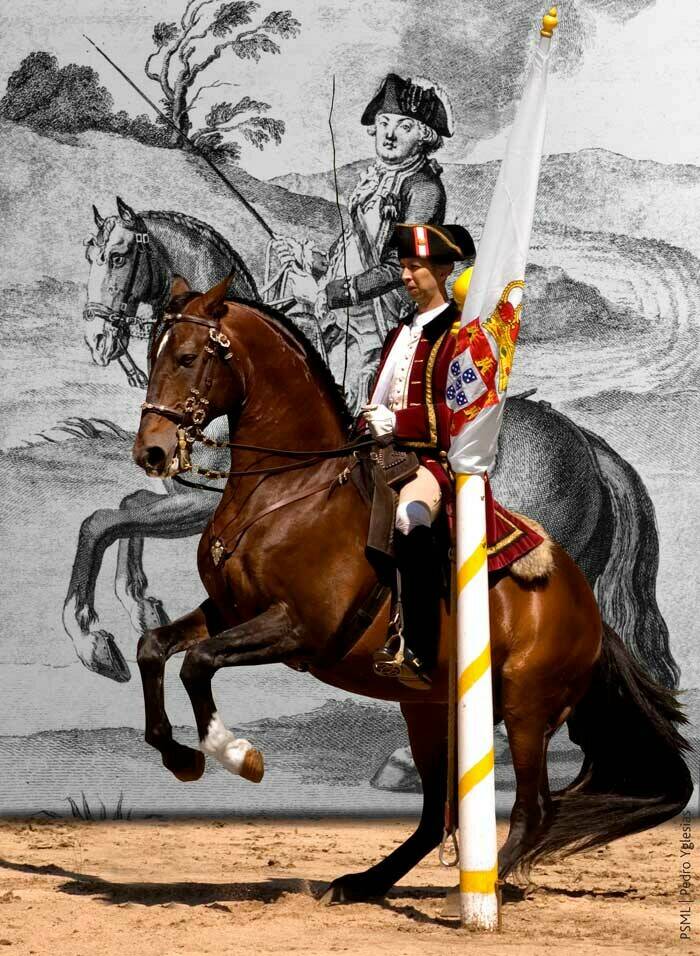

Portuguese equestrian heritage
When talking about riding history Portugal is often overseen, which is not entirely fair as the Portuguese or Iberian riders back in ancient days were world famous for their agile, brave horses and their superb skills in training horses for mounted warfare. Later during the renaissance these skills evolved into the art of classical dressage making it a very long and fine tradition that the Portuguese School of Equestrian Art today aims to preserve. They are doing a very fine job, and if you ever pass by Lisbon, make sure to pay them a visit.
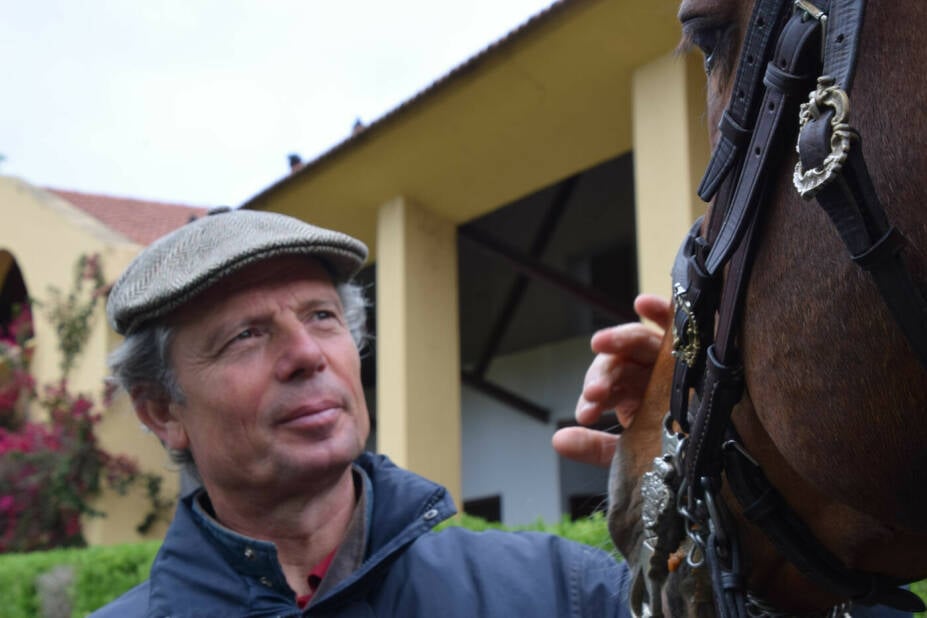
Each horse has a talent
António thrives with challenges, and believes he is evolving every day. He is determined that horses understand him and is always looking for the best method for each horse. António remembers a 6-year-old horse given up be everyone, because it wasn’t trained with its own physic in mind.
“The stallion didn’t have a functional balance, it had a short body, short legs and a big neck and head. Today this horse is the champion of the show when it comes to capriole.”
Lusitano horses start their training at the Portuguese School of Equestrian Arts during spring of the year they turn 3. The training of the young horses begins slowly from the ground. Before the horse are even put in a lunge line, it needs to able to walk next their rider and pay attention to the person walking with it.
“A successful exercise is when the horse is performing the exercise completely relaxed,” Antonio explains.
“When the horse can walk next to his rider calmly and focused then we can move on to the lunge work in a closed arena. Some horses find it more difficult to concentrate than others, and in this case, it’s important that the rider stays calm and balanced so he can project this to the horse. Classical riding means that you always ride from the horse and look for its best qualities – everyone has a talent for something. We just have to find out what fits the individual horse.”
